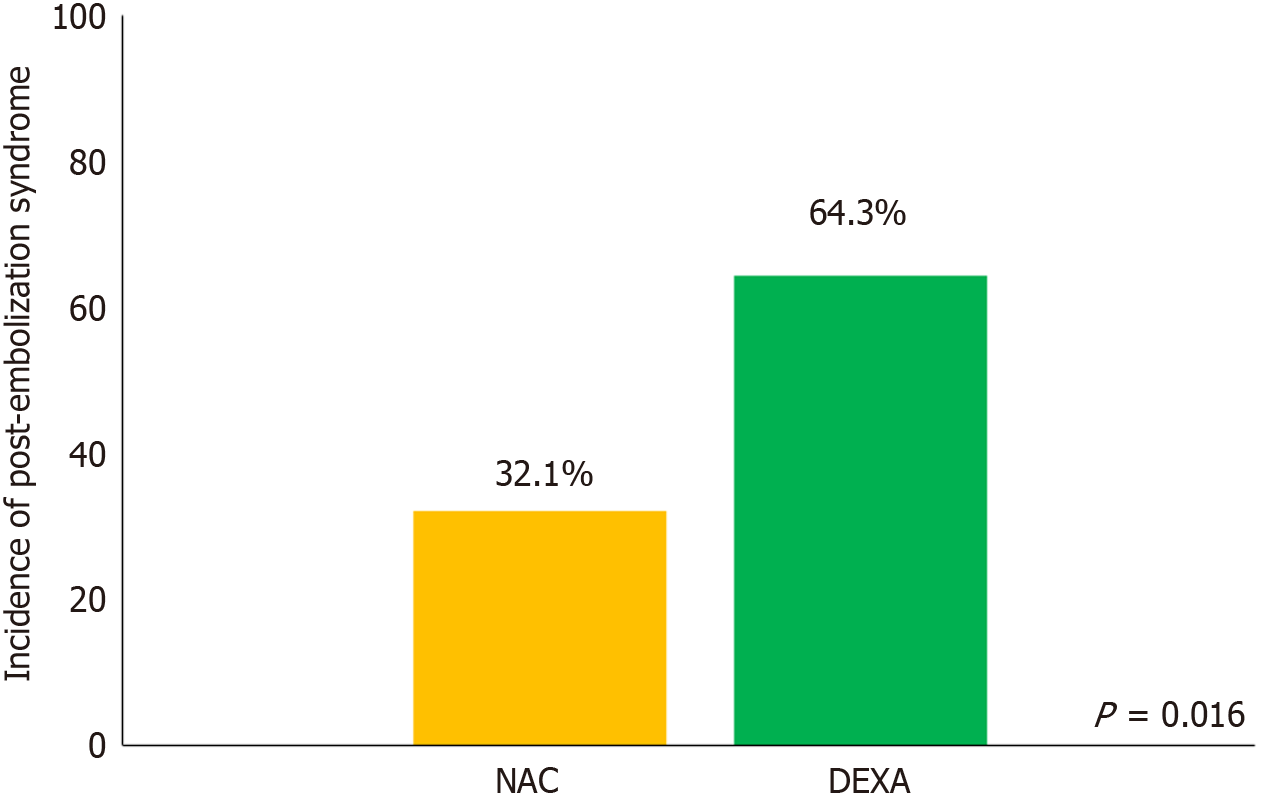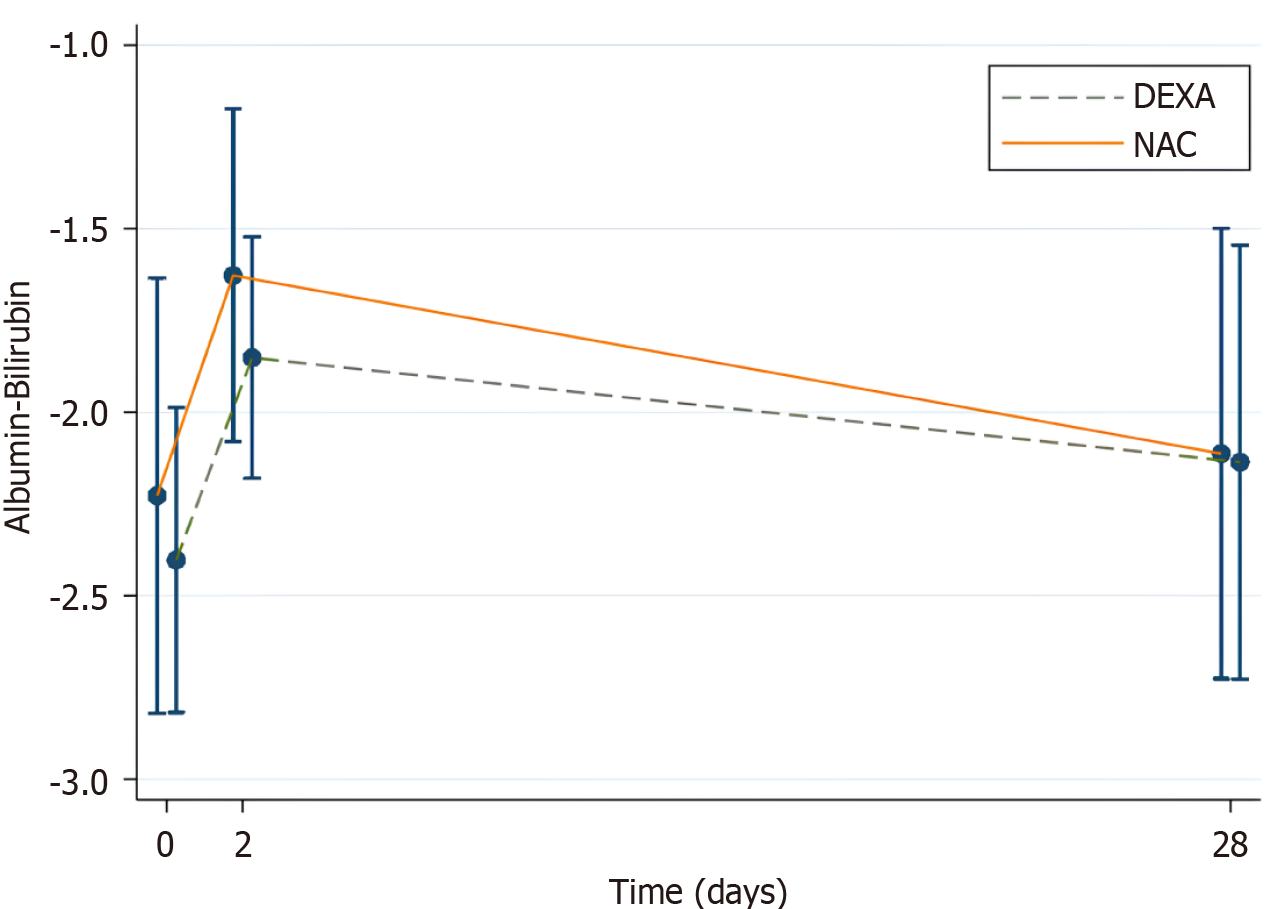Copyright
©The Author(s) 2025.
World J Gastroenterol. Aug 21, 2025; 31(31): 109630
Published online Aug 21, 2025. doi: 10.3748/wjg.v31.i31.109630
Published online Aug 21, 2025. doi: 10.3748/wjg.v31.i31.109630
Figure 1 Participant flow diagram.
TACE: Transarterial chemoembolization; NAC: N-acetylcysteine; DEXA: Dexamethasone; HCC: Hepatocellular carcinoma; BCLC: Barcelona Clinic Liver Cancer.
Figure 2 Incidence of postembolization syndrome in the N-acetylcysteine and dexamethasone group.
The χ² test was used to compare the incidence of post-embolization syndrome between the two groups. DEXA: Dexamethasone; NAC: N-acetylcysteine.
Figure 3 Dynamic albumin-bilirubin change post-conventional transarterial chemoembolization between the N-acetylcysteine and dexamethasone group.
Multilevel linear regression was used to calculate the mean with 95% confidence interval of albumin-bilirubin at time-points and compare the change of albumin-bilirubin overtime between the two groups. Albumin-bilirubin changes between the groups at day 28 were not significantly different (P = 0.167). DEXA: Dexamethasone; NAC: N-acetylcysteine.
- Citation: Koonsiripaiboon P, Ruamtawee W, Simasingha N, Tanasoontrarat W, Claimon T, Sethasine S. Efficacy of N-acetylcysteine vs dexamethasone in preventing postembolization syndrome post-transarterial chemoembolization in hepatocellular carcinoma: A randomized controlled trial. World J Gastroenterol 2025; 31(31): 109630
- URL: https://www.wjgnet.com/1007-9327/full/v31/i31/109630.htm
- DOI: https://dx.doi.org/10.3748/wjg.v31.i31.109630















